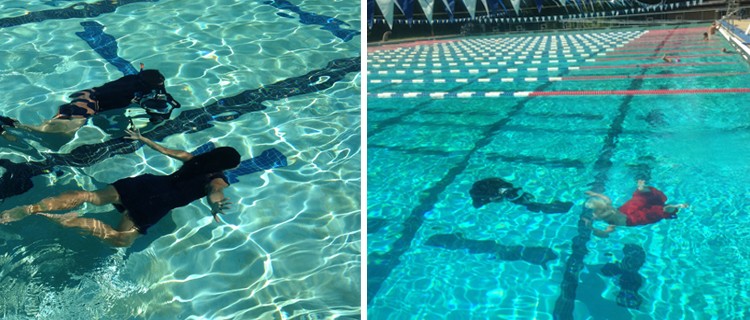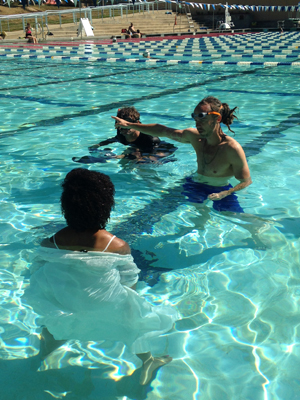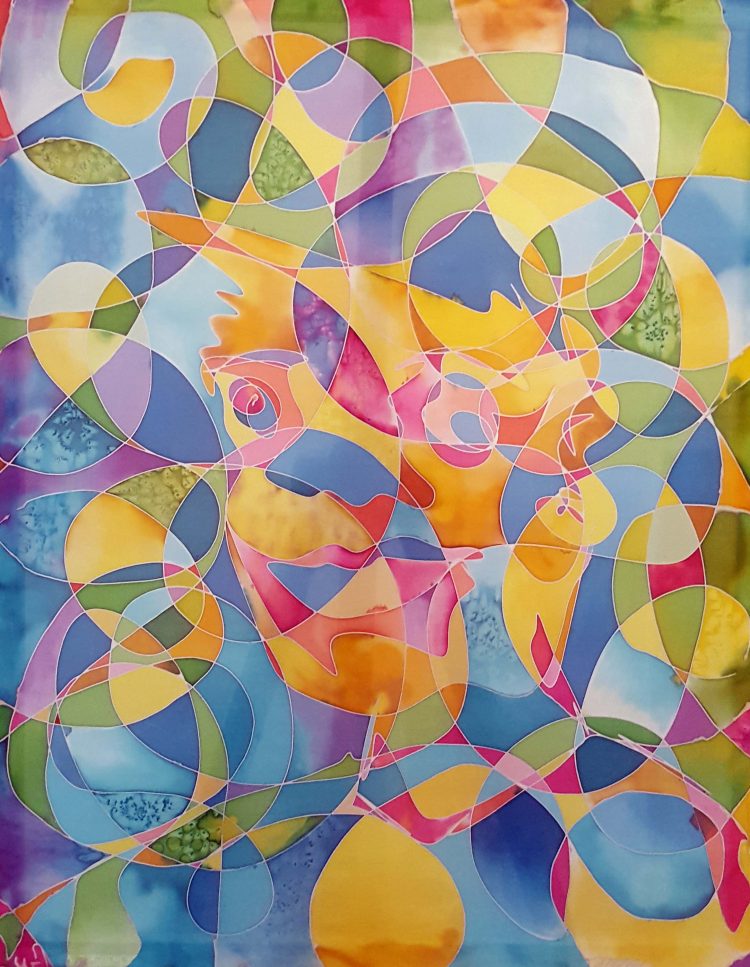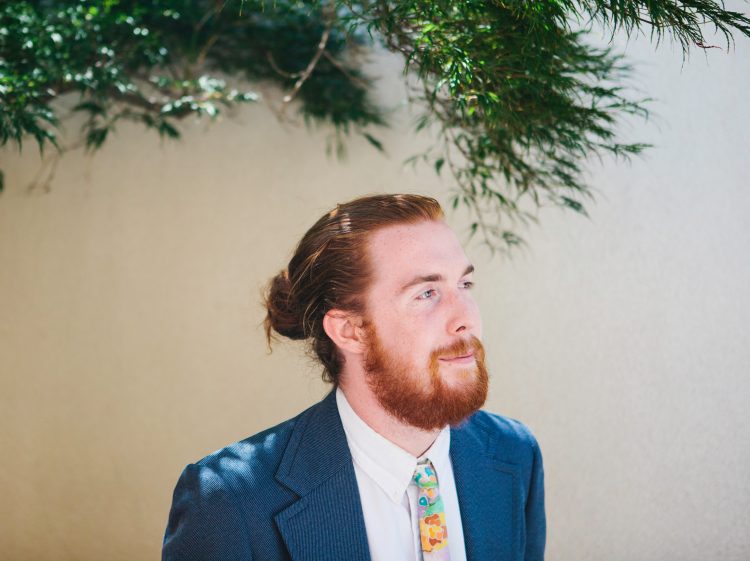As artist James Bullough creates a mural at 905 U Street, NW, The Phillips Collection asks him a few questions about his vision and process.

Photographer Tim Calver captures underwater images of models for the mural James Bullough will be creating at 905 U Street, NW.
What is your creative process like?
The very first step for me in starting a mural is seeing the wall. In most cases the shape, size, location, and any other special elements will dictate to me what the artwork should be. Once an idea is sparked and a concept developed, I set out to find the models and produce the photos. As often as possible, I like to use local models in my murals, which brings an extra connection between the artwork and the location. Once I’ve got my concept and my reference photos, I get to work on the computer distorting and manipulating the figures and mocking up the finished artwork onto a photo of the blank wall until I am happy with the overall composition. This process can take hours or weeks depending on the wall and the complexity of the image. The next step is getting the image up onto the wall either by freehand or with a projector if available. From there the fun and tedious task of rendering the image with spray paint begins.
My process may seem to some as a dry and calculated formula, but in actuality, each step of the process is a chance for creativity and invention. My concepts and images change and evolve as I go. Each stage of the process is a new opportunity to see and approach the artwork differently and re-examine the composition. I like to think of it as a built-in periodic quality control check-up.

Artist James Bullough directing one of the mural models.
What themes do you most often pursue?
My mural work and my studio work are quite different. In the studio, I explore more edgy and challenging themes which can be a bit too strong for murals and public art. When I’m working on the streets I try to be as responsible as possible and considerate of the people and culture of the area I am painting. Regardless of where the artwork is, my work almost always centers around portraiture and how we as humans relate to one another and perceive ourselves and others around us. Beyond that, I think it is important for an artist to leave their work open to interpretation, especially with public art. I like to leave my work vague and mysterious. When people ask me what the work means or represents I like to turn it back on them and ask what it means to them, what it makes them think about when they see it.
Much of your work is figurative. Is there a reason you focus primarily on the human body?
The human form (or the human condition) is possibly the oldest and most repeated theme in all of art. I can think of no other subject in the realm of imagination more fascinating, tantalizing, familiar, provocative, and graceful than the human body and the endless possibilities of its positioning and movement. The human form is something that all people can relate to and connect with and is a perfect tool to create mood and emotion in a painting.
Furthermore, the endless subtleties and complexities of the human flesh have become something of an obsession for me. From the wrinkles in an elderly man’s hands to the smooth and glassy highlights on a young woman’s legs, the challenge of making skin believable is immense, especially when limited to the color range and technical limitations of spray paint. The feeling of accomplishing this feat and have other people experience it in their neighborhood or on their daily commute is immeasurable.
Your work often appears fragmented or slightly broken down. What is the significance of this technique?
Like most artists, I arrived at my personal style and painting techniques through years and years of experimentation and passion for the craft. True artists should be constantly pushing themselves and trying new things. Every success and failure leads to a new discovery, and every once in a while you can land on something that really clicks. A year or so ago I began fragmenting and distorting my subjects and people have really responded to these paintings. I don’t like to give away too much about the meaning or significance of my work because that is up to the viewer to decide. What I will say about my technique is that most of the decisions I make during the conception and execution of a painting are aesthetic and my main concern is always to create a work that is both powerful and beautiful.




